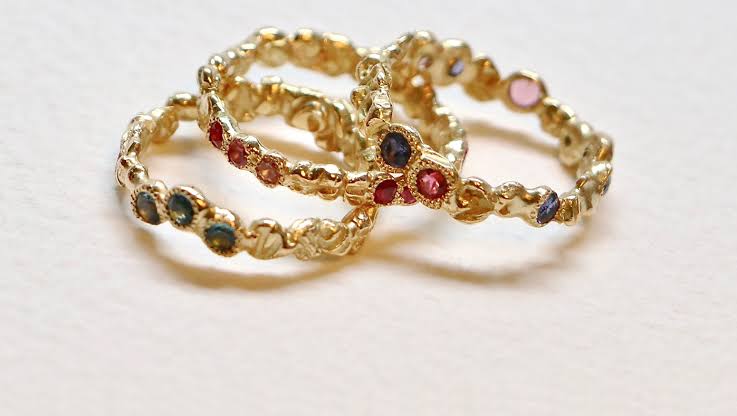Allah created Adam in his image -By Abu Naasir
خلق الله آدم على صورته Shortly after the class on Al-Adab al-Mufrad today (12/Sept./2021), a brother requested…
خلق الله آدم على صورته
Shortly after the class on Al-Adab al-Mufrad today (12/Sept./2021), a brother requested I should give more explanations on the hadeeth noting the fact that some of the Scholars of Sunnah explain the hadeeth differently.
Below was a response I gave (with slight editing) regarding a similar question on a different platform back in 2011. I beg Allah to make it beneficial, Amin:
1). The scholars of Sunnah are agreed that Allah has a ‘Soorah’, form, and from the evidences for that position is the hadeeth of Abu Hurayrah collected by al-Bukhaaree in his Saheeh (7437) about Intercession which includes: “…and Allah will appear to them in His ‘Soorah’, which they know…”. And the hadeeth in Musnad Ahmad about the Prophet’s seeing Allah in his dream which contains: “I saw my Lord in the best ‘Soorah’, form…” The fact that He has Fingers, Hands, Feet point to His having ‘Soorah’. These are established facts among the Ahlussunnah wa’l-Jamaa’ah.
They are opposed – albeit wrongly – by the Jahmiyyah led by the confused deviant, Jahm bin Safwan as-Samarqandee who held that Allah – Glorious is He – has no Soorah!! Some of the ignorant, philoso-minded, West-toxicated Muslims today follow Jahm – many of them out of ignorance or arrogance or both – and reject this belief!
2. As is the methodology of our pious predecessors – which is well established in the the Qur’an and authentic Sunnah – they affirm the true meaning of this Attribute that He has affirmed for Himself (as cited above in 1.) as it befits Him without Tahreef (distortion: giving explanations that lack basis in revelation) or Ta’teel (rejection) or Takyeef (saying how) or Tamtheel (likening).
3. However they differ regarding the meaning of this hadeeth:
خلق الله آدم على صورته…
Khalaqa Allahu Aadama ‘alaa Sooratihi
While some of the Scholars – past and present – hold the pronoun in Sooratihi to refer to Allah the Almighty, others – past and present – consider the pronoun to refer to Adam – alayhis-salam. The scholars on both sides have sought texts from revelation to give preponderance to their view. Here, the discussion will be in two stages:
(i) Who does the pronoun, hi, in Sooratihi, refer to: Allah or Aadam?
(ii) What then is the meaning of the correct thing from (i) here?
(i) As regards those who hold that the pronoun refers to Allah, they depend on one of its versions that says:
خلق الله آدم على صورة الرحمان
Khalaqa Allahu Aadam ‘alaa Soorati ar-Rahman, instead of “Sooratihi” so that hi here, refers to Ar-Rahman (Allah).
Al-Hafidh Ibn Hajar al-Asqalaanee (rh) said: “It is said that the pronoun (hi in Sooratihi) refers to Allah. Those who say that hold on to what is reported in some of its chains (i.e. of the hadeeth) that: ‘…’alaa Soorat ar-Rahmaan (in the ‘Soorah’ of ar-Rahman).” (Fath al-Baaree 11/3, Daar al-Fikr, Beirut).
Shaykh Bundar Al-‘Abdalee in his book, Hadeeth as-Soorah: Riwaayatan wa Diraayatan cited that Ibn Hajar (rh) refferred to Imam Qurtubee (rh) to have also asserted similarly. Also, while commenting on the book specifically authored by Shaykh Hamood at-Tuwayjuree on this subject to establish that the pronoun refers to Allah, al-Imam Al-Albaanee said, “…And the hadeeth upon which he based his book, added to the fact that it’s chain is weak, it contradicts the four authentic chains reported from Abu Hurayrah…” (Saheeh al-Adab al-Mufrad pg. 271 publ. by Daar as-Siddeeq and Muassasat ar-Rayyan).
Shaykh Saleem bin ‘Eid al-Hilaalee averred similarly in his extensive discussion of the hadeeth in his book, Saheeh al-Anbaa al-Musnad min Ahaadeeth al-Anbiyaa (1/27).
You would also note this in the explanation of Shaykh Ibn al-‘Uthaymeen in his commentary on Kitab at-Tawheed. Shaykh al-Fawzaan also gave a similar explanation.
The point here is that, those who hold that the pronoun refers to Allah depend on one of the chains of the report that contains the wording: “…’alaa Soorati ar-Rahman…”.
Basically that use could be traced back to Imam Ishaq bin Rahwayh, one of the scholars of hadeeth in the time of Imam Ahmad from the Transoxania.
However, this version of our hadeeth:”…’Khalaqa Allahu Aadama ‘alaa Soorati ar-Rahman…” is Munkar (Srange), very weak, (just next to Mawdoo’)! As such, the explanation of the hadeeth that is based on such a weak report of the hadeeth is also necessarily weak. Al-Imam Ibn Khuzaymah, the student of al-Bukhaaree and Muslim and also their teacher – mentioned three defects in this report, al-Imam al-Albaanee pointed out a fourth (Silsilat al-Ahaadeeth ad-Da’eefah no. 1175 and 1176) and Shaykh Bundar al-‘Abdalee (in his treatise cited above) mentioned a fifth defect. Each of these defects is sufficient to render the hadeeth weak. What about when they are all combined in a single chain of transmission?
Still, apart from Ibn Khuzaymah, al-Imam Ibn Qutaybah, al-Maaziree, al-Qurtubee, an-Nawawee and Imam Al-Albaanee have all classed the hadeeth very weak. (Saheeh al-Anbaa al-Musnad min Ahaadeeth al-Anbiyaa (1/27)).
In a nutshell, the basis for considering the pronoun to refer to Allah is weak and so, unacceptable.
As for those who view that the pronoun in:
خلق الله آدم على صورته
“…’alaa Sooratihi” refers to Aadam, they depend on the phrase in the same hadeeth that followed Sooratihi:
…وطوله ستون ذراعا
“…wa tooluhu sittoona dhiraa’an (…and his height was sixty spans)” (Al-Bukhaaree and Muslim).
Al-Hafidh Ibn Hajar said, “This expression strenghtens the view of those who hold that the pronoun is for Aadam.” (Fath al-Baaree 6/366).
Before Ibn Hajar, al-Imam an-Nawawee had said, “This version clearly shows that the pronoun refers to Aadam.” Sharh Muslim (17/178 Dar Ihyaa ath-Thuraath, Beirut).
Still, before an-Nawawee likewise, Qaadee ‘Iyyaad bin Moosa bin ‘Iyyaad in Ikmaal al-Mu’allim bi Fawaaid Muslim (8/374), Muhammad bin Khaleefah in Ikmaal Ikmaal al-Mu’allim (9/284), Imam As-Sunnoosee in Mukmil Ikmaal al-Ikmaal (9/284) all affirmed that the pronoun refer to Aadam based on this phrase: “…wa tooluhu sittoona dhiraa’an (…and his height was sixty spans)”.
Al-Imam al-Albaanee also said that in Saheeh al-Adab al-Mufrad pg. 270 and Silsilat al-Ahaadeth as-Saheehah no. 449.
It was also the explanation of al-Imam al-Khattaabee, Al-Baghawee, Al-Bayhaqee and others. See Al-Asmaa was-Seefaat by Al-Bayhaqee pg. 311-313 (pub. by Daar al-Hadeeth Cairo).
Thus the hadeeth in full will be:
خلق الله آدم على صورته وطوله ستون ذراعا
“Allah created Aadam in his form and his height was sixty spans….”
In addition, this second group of scholars who view that the pronoun refers to Adam, employ a basic linguistic rule that: “Pronouns refer to the nearest noun mentioned”. Thus, since Aadam was mentioned before Sooratihi, then the pronoun, hi, definitely refers to Aadam and not Allah.
Al-Imam Badruddeen al-‘Aynee said, “His saying: ‘alaa Sooratihi means, ‘alaa Soorati Aadam because it is the nearest…” Umdat al-Qaaree (22/229).
From the above, it becomes clear that, to hold the pronoun in the expression to refer to Aadam is the correct opinion – And Allah knows Best.
(ii) So, what does the hadeeth mean?
Al-Imam Abu Sulayman al-Khattaabee explained: “Its meaning is that, the descendants of Aadam were created in stages. They were Nutfah at the beginning, then ‘Alaqah and then Mudgah. Later they had different foetal forms until the completion of the gestation. Then they would be born as young ones. Afterwards, they grow from childhood until they mature when the bodies become fully formed. He (sallallaahu alayhi wasallam) is saying: ”Aadam’s creation did not pass through these forms; the first time he was created he was found complete: his height was sixty spans.” See Al-Asmaa was-Seefaat by Al-Bayhaqee pg. 312 and Saheeh al-Anbaa al-Musnad min Ahaadeeth al-Anbiyaa (1/24).
A similar explanation was given by Imam Ibn Hibban. See Al-Ihsaan fee Taqreeb Saheeh Ibn Hibban (hadeeth no. 6162 pg 1638 publ. by Daar al-Ma’rifah, Beirut).
Al-Imam Ibn Hibban al-Qurtubee, al-Baghawee, Al-Bayhaqee, Qaadee ‘Iyyaad, Badruddeen al-‘Aynee, ibn Battaal, and others have also given similar explanations.
And Allah Knows Best.




